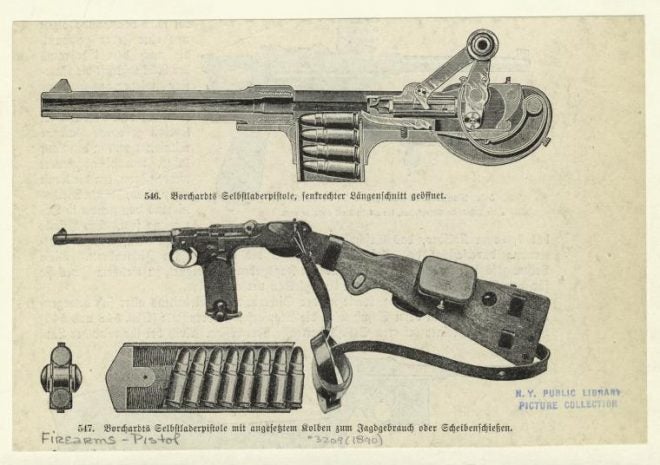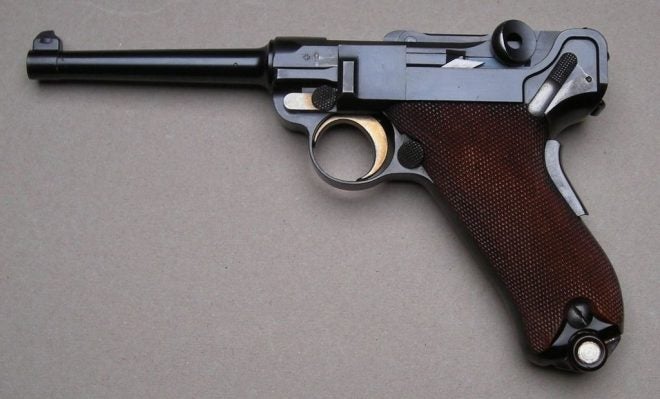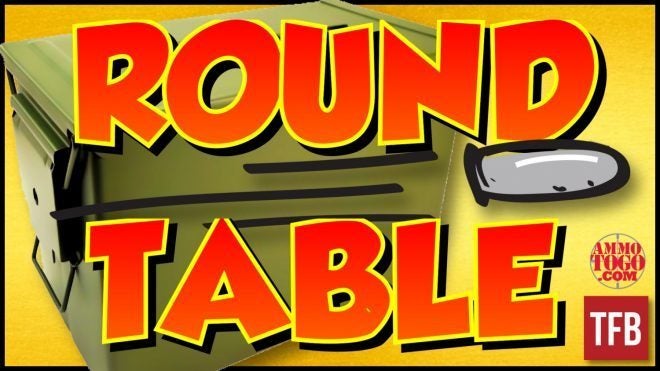Welcome back to another edition of the TFB Round Table sponsored by Ammunition To Go! For those who are first joining us, this is a multi-part series where TFB will discuss the characteristics of great ammunition for specific applications. This could vary from big game hunting, plinking, precision rifle matches, small game hunting, or even pistol competitions. Chances are there is someone here at TFB who can offer you advice on buying the right round for your task at hand. This week I once again offer up some history and ammunition options on another lesser-known and appreciated cartridge, the 7.65×21 Parabellum or better known as .30 Luger. So is it just a beautiful bottleneck? Does it only provide pitiful potential potency? Let’s dive right into it and hopefully render some ammunition ideas that get your old toggle-lock up and bouncing again!
TFB ROUND TABLE: THE .30 Luger ORIGIN STORY
Just before the 20th century, the most popular handguns were that of black powder revolvers. As early as 1890 a new craze was on the horizon. Inventors around the globe started tinkering with the idea of a firearm that can load itself, a self-loader. Fast forward to 1893 when Hugo Borchardt unveiled his C-93 pistol to the masses to some success. This toggle-locked piece of ingenuity had some impressive features that you see in modern firearms such as a push-button release magazine. If you’ve never seen what the C-93 looks like, just imagine a metal version of the Keltec CP33 with a longer barrel, toggle-lock mechanism, and it uses a long bottleneck cartridge. Borchardt was a busy inventor and could be a fairly vain one at that. When it came to his self-loading pistol being in Swiss military trials he was uninterested in improving his design. At this time a certain Georg Luger who had been Borchardt’s assistant at one time was tasked by DWM to improve upon the C-93 design in hopes to obtain a military contract. After shortening the Borchardt cartridge and simplifying the toggle lock mechanism with an added ramp and less clock style springs, the iconic Luger pistol was born! This early version even included a grip safety as it was requested by the Swiss. It was the obvious choice when it came to the Swiss trials. It was simple to use, comfortable ergonomics and grip angle, and the .30 Luger had some mighty pep in comparison to other calibers at the time. Ammunition to Go gives us a lovely overview and even some tips when it comes to dealing with military surplus ammunition:
.30 Caliber Luger ammo or the 7.65 Parabellum, is a 7.65x21mm cartridge that was designed in 1898. The 30 caliber Luger cartridge was originally designed to improve of the current service pistol of the day. The Luger was designed based upon Georg Luger’s 30 Luger cartridges to present a modern military pistol that was ergonomic and easy to use. These are bottle-necked pistol rounds that despite their bottleneck nature, feed extremely reliably in most firearms.
It’s important to note when dealing with surplus 30 Luger two loads were made, one for used in pistols and one for use in carbines and sub machine guns. The load for carbines and sub machine guns is much hotter that the pistol load and is not suggested for use in the older Luger pistols.
While the Luger and its variants are often thought of as a German caliber and often on the opposing side of the United States this isn’t true. Both Switzerland and Finland adopted 30-cal Luger ammo for use in the Luger pistol. In the First World War the round found itself on both ends of the war, in several different and distinct firearms. Eventually the caliber was found in the Sig P210, and the Astra A-80, with the Sig being a popular choice among American civilian shooters today.
The 30 caliber Luger is often revered by purists for its unique history and for being the original Luger chambering. This ammo is known for being a flat shooting round and exceptionally accurate, and when combined with the ergonomic Luger pistols make an exceptionally accurate combination.
So the Luger pistol was adopted by not only the Swiss military but also eventually Germany, Bolivia, and Brazil, albeit some in 9×19. Even though it was adopted by a few, many were bought and used by countries around the world! Too many to name. They’d be captured and stolen and coveted pieces of craftsmanship, especially the Swiss-style Lugers. As mentioned above in the quote from Ammunition to Go, .30 Luger was not only chambered in just the original pistol. It would be chambered in a number of pistols like the SIG P210 and the Astra A-80. Due to the reliability of the bottlenecked design, .30 Luger was also found in such guns as MP34 and the Suomi M-26 amongst various other early submachine guns.

Borchardt C-93. Photo Credit: Wikimedia Commons

Swiss Luger Model 1900. Photo Credit: Wikimedia Commons
TFB ROUND TABLE: WHAT’RE WE LOOKING FOR HERE?
If you happen to own a fine firearm chambered in this cute little bottlenecked cartridge, there are a few things to consider. You’ve gotten yourself a gorgeous Swiss Luger for bragging rights, or an accurate SIG P210 to compete with, or heck a transferable submachinegun. Regardless, it is important to know your intent and even better yet know what you are looking for in terms of .30 Luger which can still be found on shelves today.
- Ammo type: Surplus/New Production
- Bullet Grain Weight
- Bullet type
Right off the bat, it would be wise to determine if the ammo you got yourself is second-hand surplus ammo or some store-bought stuff. As Ammunition to Go mentioned earlier in their quote about the caliber, some .30 Luger was loaded hotter to ensure consistent cycling of submachine guns and your mint Swiss Luger may not fair all too well if shooting it. Bullet weight will be pretty uniform across the board but if you are a perfectionist who wants to shoot what the swiss military shot it would have to be 93gr FMJ. Bullet type is mostly up to your preference. Full metal jacketed, soft point, and full lead ammunition are gonna be the most plentiful. If you want anything more eccentric or potent from this beautiful bottleneck you are probably going to have to reload it yourself. Mind your pressures and please take care of your piece of history!
As always, thank you for reading TFB! Be safe out there, have fun while shooting, and we will see you next time for the TFB Round Table brought to you by Ammunition to Go! Also, let us know what you think in the Comments below! We always appreciate your feedback.
TFB’S ROUND TABLE IS BROUGHT TO YOU BY AMMOTOGO.COM
Fiocchi .30 Luger 93 Grain SJSP
https://www.ammunitiontogo.com/product_info.php/pName/50rds-30-luger-fiocchi-93gr-soft-point-ammo\
This is 30 Luger / 7.65 Fiocchi 93gr. Soft Point Ammo. This ammo is manufactured by Fiocchi in Italy, and is excellent quality ammo. I have shot many rounds of this ammo and I am very pleased with the way it functions. It is clean and accurate. This ammo is brass cased, non-corrosive and 100% new factory fresh. This is some excellent target or hunting ammo for the price. This ammo comes packed in 50rd. boxes.
Fiocchi .30 Luger 93 Grain FMJ
https://www.ammunitiontogo.com/product_info.php/pName/50rds-30-luger-fiocchi-93gr-fmj-ammo
This is Fiocchi 7.65 Parabellum / 30 Luger 93gr. Full Metal Jacket Ammo. This ammo is clean and accurate. This ammo is brass cased, boxer primed, non-corrosive and 100% new factory fresh. This is some excellent target ammo for the price. It comes packed in 50rd. boxes.
 Your Privacy Choices
Your Privacy Choices





